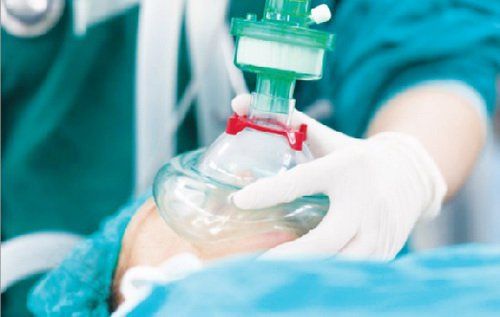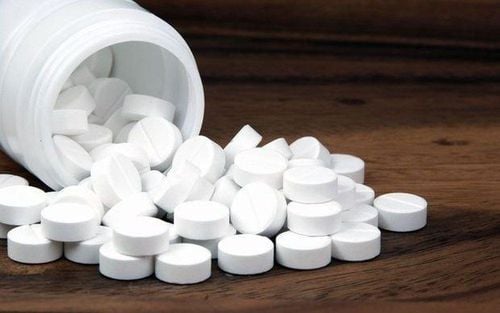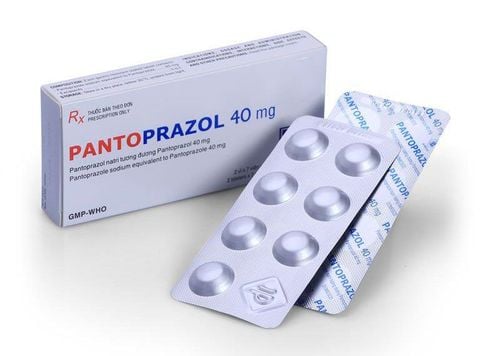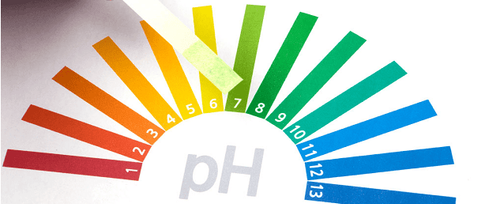This is an automatically translated article.
The article was professionally consulted with Master, Doctor Do Xuan Chien - Head of Department of Medical Examination & Internal Medicine - Vinmec Ha Long International General Hospital.Acid-base imbalance is one of the concerns of many patients. There are two types of acid-base disorders: respiratory and metabolic. Respiratory diseases affect blood pH by altering PCO2 pressure, while metabolic diseases change blood pH by altering HCO3- concentrations. Knowing about the causes and symptoms of acidosis will help patients better monitor their condition.
1. What is acidosis?
Acidosis (also called acidosis) is a condition in which the acidity of body fluids exceeds normal levels, which occurs when the kidneys and lungs cannot keep the body's pH balance. There are two types of acidosis:
Metabolic acidosis. Respiratory acidosis.
2. Causes of acidosis
2.1 Causes of metabolic acidosis
Metabolic acidosis begins in the kidneys instead of the lungs, resulting from increased production of metabolic acids or disturbances in the kidneys' ability to excrete acid. Metabolic acidosis in renal failure occurs when the kidneys cannot remove enough acid or excrete too much base.There are 3 main types of metabolic acidosis, including:
Ketoacidosis is a severe acute decompensation of diabetes, often occurring in people with poorly controlled diabetes. If the patient's body lacks insulin, ketones will build up in the body and acidify the blood. Ketosis occurs at an incidence of about 4.6-8/1000 patients per year. Hyperchloremic acidosis is caused by loss of sodium bicarbonate. This base helps keep the blood neutral. Both diarrhea and vomiting can cause this acidosis. Lactic acidosis occurs when there is too much lactic acid in the body. There are many causes of lactic acid build-up including long-term alcohol use, heart failure, cancer, epilepsy, liver failure, prolonged hypoxia and low blood sugar, prolonged intense exercise, etc. .
2.2 Causes of respiratory acidosis
Respiratory acidosis occurs when too much CO2 builds up in the body. Normally, the lungs remove CO2 while breathing. However, sometimes our body can't get rid of enough CO2 due to:
Chronic respiratory conditions such as asthma, pneumonia, pulmonary edema, obstructive or stenosis syndrome. Chest trauma, chest muscle weakness, deformed chest structure. Fat. Abuse of tranquilizers. Alcohol abuse. Nervous system problems: Central respiratory depression (barbituric poisoning, coma) or peripheral respiratory paralysis (polio fever, Guilain Barré syndrome). In these cases, inhibition of the respiratory center in the medulla oblongata causes CO2 accumulation, causing an increase in the partial pressure of CO2 in the blood. Due to decreased alveolar ventilation. Due to increased CO2 during inhalation (due to atmospheric pollution or soda lime saturation during closed anesthesia or failure of the exhalation valve).

3. Acidosis symptoms
Both respiratory and metabolic acidosis have many symptoms. However, the symptoms of acidosis vary according to the cause.
3.1. Symptoms of metabolic acidosis
In metabolic acidosis, the central nervous system is inhibited causing symptoms including lethargy, fatigue, headache, somnolence, anorexia, jaundice, arrhythmias, and positioning disturbances. Rapid and deep breathing is a compensatory respiratory mechanism to reduce the amount of acid in the blood. In addition, if the patient has ketoacidosis, the patient's breath may also have a fruity smell - a sign of diabetic acidosis.3.2. Symptoms of respiratory acidosis
Some common symptoms of respiratory acidosis include: confusion, easy fatigue or sleepiness, shortness of breath, headache. This is often the manifestation of hypoxia and the main symptom of the underlying disease, but elevated CO2 alone causes coma, increased intracranial pressure, and increased cardiovascular excitability due to increased catecholamine secretion (causes tachycardia, dilatation, and tachycardia. pulse, ventricular arrhythmia).
In respiratory acidosis, increased partial pressure of CO2 in the blood causes dyspnea, increased pulse, increased blood pressure. The patient's skin may be warm and red due to vasodilation due to increased CO2 levels.
4. Risk factors for acidosis
Acidosis is very common and can occur at any age. You can control this disease by minimizing your risk factors.
Some of the factors that increase the risk of acidosis are:
A high-fat, low-carbohydrate diet. CKD . Fat. Loss of water. Aspirin or methanol poisoning. Diabetes.
5. Measures to treat acidosis

To treat respiratory acidosis, remove the cause (opiates, muscle relaxants), improve alveolar ventilation, provide oxygen, and provide mechanical ventilation if necessary. The decision to urgently intubate a patient is clinical, not waiting for blood gas results. Waiting time for blood gas results while the patient has dyspnea, asphyxia, and symptoms of increased respiratory work (eg, use of accessory muscles of respiration, diaphragmatic jerk, intercostal muscle contractions) only aggravates the condition. disease status.
For metabolic acidosis, the doctor will have separate treatments for each different form of the disease. People with acidosis due to hyperchloremia may be given sodium bicarbonate orally. Metabolic acidosis in renal failure can be treated with sodium citrate. If you have diabetic ketoacidosis, you will be given fluids and insulin to balance the pH. Treatment for lactic acidosis may include bicarbonate supplements, intravenous fluids, oxygen, or antibiotics, depending on the cause.
Doctors need to know what causes acidosis to determine how to treat it. However, some treatments can be used for any type of acidosis, such as using sodium bicarbonate (baking soda) to raise blood pH. Patients can take the drug orally or intravenously.
Vinmec International General Hospital is one of the hospitals that not only ensures professional quality with a team of leading medical doctors, a system of modern equipment and technology, but also stands out for its medical examination and treatment services. comprehensive and professional medical consultation and treatment; civilized, polite, safe and sterile medical examination and treatment space.
Please dial HOTLINE for more information or register for an appointment HERE. Download MyVinmec app to make appointments faster and to manage your bookings easily.














